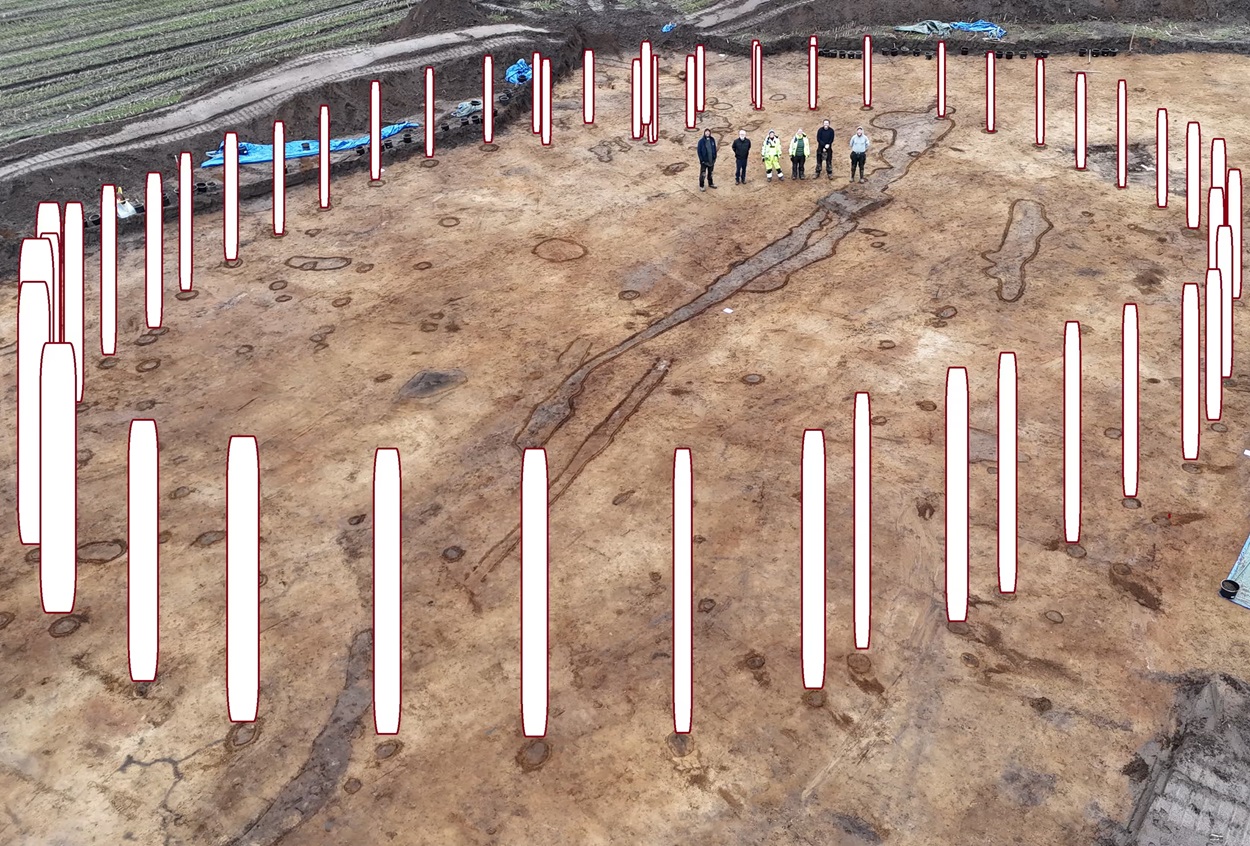Archaeologists in Denmark have uncovered a 4,000-year-old monument that closely resembles England’s Woodhenge timber circle.
The monument was discovered during construction works for a new housing estate in the Danish town of Aars, located in Himmerland, northeastern Jutland.
Preliminary studies found traces of a Bronze Age settlement, along with a high-status burial containing a bronze sword.
Upon opening a new section of the excavation, archaeologists found an oval feature measuring 30 metres in diameter which contains a circular formation of 45 wooden posts spaced roughly two metres apart.
According to experts, the monument closely resembles Woodhenge, a Neolithic Class II henge and timber circle within the Stonehenge World Heritage Site in Wiltshire, England.
Archaeologists suggest that the monument is likely associated with the European Bell Beaker culture, an archaeological culture named after the inverted-bell beaker drinking vessel.
Sidsel Wåhlin, a curator at the Vesthimmerland Museum, said: “Several small wooden circles have been discovered on Bornholm (east), which were thought to be sun temples because of the many stone sun disks found there. To my knowledge, this is the first of this larger type that we can study properly.”
Based on the British model of henge monuments, archaeologists are conducting further studies to see if the interior of the monument has a smaller circle.
An analysis of the monument’s axis shows a similar alignment with that of Stonehenge and Woodhenge, indicating that the monument builders in England and Denmark share similar worldviews despite being over 600 miles apart.
Header Image Credit : Vesthimmerland Museum
Sources : Vesthimmerland Museum





